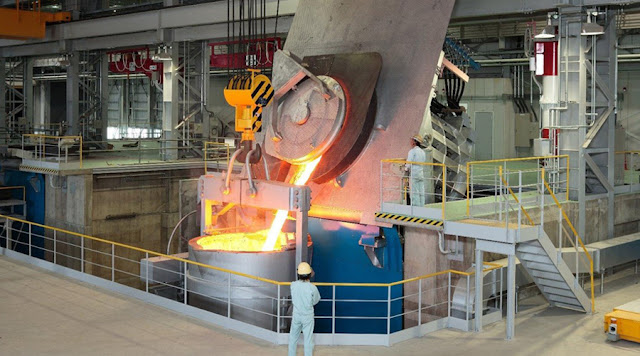Induction Furnace Lining Procedure
Induction furnaces are widely used in various industries for melting and refining metals. To ensure its optimal performance and longevity, its vital to have a well-maintained furnace lining.
The smleting furnace lining acts as a protective barrier between the intense heat generated by the furnace and the structural components, preventing damage and increasing overall efficiency.
In this article, we will explore induction furnace lining procedure and their importance in maintaining the furnace's ability to operate.
Induction Furnace Lining Procedure
This process involves several key steps that must be followed strictly. HANI works with you to delve into each step:
1. Prepare the furnacee:
Before starting the lining process, the furnace must be thoroughly cleaned. Any debris or residue from previous operations may interfere with the liner's adhesion. Before proceeding, the furnace should be inspected for any cracks or damage that need to be repaired.
2. Select furnace lining material:
The choice of furnace lining material depends on the specific requirements of the furnace and the type of metal being processed. Common furnace lining materials include refractory bricks, amorphous refractory materials, ceramic fiber linings, etc.
Each material has its advantages and is suitable for different applications.
3. Furnace lining installation:
The furnace lining installation process begins with applying a layer of refractory mortar or adhesive to the furnace wall. This creates a smooth surface for the lining material to adhere to. The lining material is then carefully installed, taking care to ensure correct alignment and thickness. Depending on the lining material, different techniques can be used, such as gunning or stamping.
4. Cured lining:
After the lining is installed, it is crucial to allow sufficient time for the lining to cure.
The process involves gradually heating the furnace to a specific temperature that allows the refractory material to harden and develop its desired properties. Cure time may vary depending on furnace lining material and furnace size.
5. Inspection after curing:
After the lining has cured, it should be inspected thoroughly to ensure its integrity.
This includes checking for any cracks, gaps or signs of wear. If there are any problems, they should be solved in time to avoid further damage in subsequent operations.
Furnace linings are critical to keeping melting furnaces operating efficiently. Here are some key reasons why induction furnace lining procedure are crucial:
1. Insulation:
The furnace lining material acts as a barrier to prevent excess heat from escaping from the furnace. This insulation ensures that heat is concentrated within the furnace, resulting in faster, more energy-efficient melting of metal.
2. Prevent corrosion & erosion:
IF furnace lining protects the furnace walls from corrosion by molten metal and slag.
Without proper lining, furnace walls can quickly deteriorate, compromising their structural integrity and shortening their service life.
3. Enhance fire resistance:
The furnace lining material has specific refractory properties that allow it to withstand high temperatures and thermal shock. These properties prevent the lining from cracking or peeling, ensuring a longer service life and reducing maintenance downtime.
4. Improve metal quality:
A well-maintained induction melting furnace lining plays a vital role in maintaining the purity of the molten metal. The lining material should be chemically inert to prevent any contamination or reaction with the metal being processed.
In summary, induction furnace lining procedure are a critical aspect in maintaining the efficiency and longevity of these industrial furnaces.
By following the correct steps, including selecting the correct lining material, conducting regular inspections and promptly resolving any issues, industries can ensure optimal furnace performance, reduce downtime and improve the quality of processed metal. Investing in a well-maintained furnace lining is a worthwhile endeavor that can pay dividends in operational efficiency & cost-effectiveness.
E-mail: saleswn@hanrm.com / inquiry66@hanmetallurgy.com (Daisy Zhai)
Tel / Whatsapp / Wechat: 0086 17791213533
Xi'an Hani Tech Co., Ltd.



Comments
Post a Comment